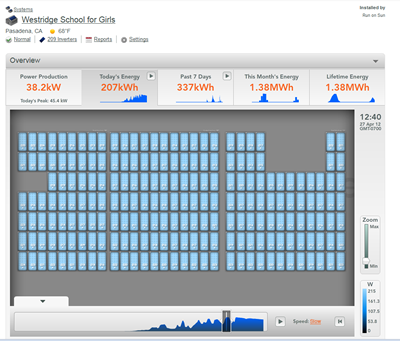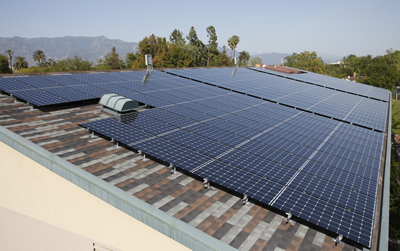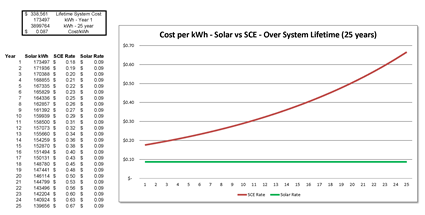Categories: "Solar Rebates"
05/20/17
Categories: All About Solar Power, PWP Rebates, PWP, Ranting
Run on Sun is Pasadena Solar!
Run on Sun has been doing Pasadena Solar for more than 10 years, but only now have we gotten around to dedicating a webpage just to Pasadena Solar!
 Who loves Pasadena Solar?
Who loves Pasadena Solar?
I know, kinda silly (and foolish from an SEO perspective) but we figured we were fine as we were. But then I looked at the search results on Google for “Pasadena Solar” and it was really depressing. I mean seriously - read some of those reviews and you know that they are fake - but still their related websites were getting better rankings than ours! Not acceptable!!!
So now, if you want to see a webpage that proudly proclaims its love for Pasadena Solar, we’ve got you covered - complete with this iconic image!
Oh, and because we do so much work in neighboring Altadena we are hoping to do a shout-out page for them too but we need an idea for the quintessential Altadena image - if you have ideas, please let us know!
07/02/13
Categories: PWP Rebates, Commercial Solar, Non-profit solar, Westridge PAC Project
Westridge Case Study: Part 2 - Run on Sun Gets it Done!
In Part One of this three-part Case Study we learned how Westridge School chose Run on Sun as their solar contractor. Here in Part Two we focus on the actual process of the installation as seen from the client’s perspective.
Run on Sun Gets it Done
With the paperwork filed and the rebate secured, Run on Sun had a very tight window — less than two weeks in April 2012 — in which to install and connect all 209 solar modules and get the monitoring software up and running. The goal was for the project to be completed and operational by the time Westridge students returned from Spring break, so time was of the essence.
 For the rooftop display Run on Sun used a microinverter system supplied by Enphase Energy, which allows customers and solar installers to track the output of the modules, individually or collectively, from the convenience of their computers, iPads or smartphones. This software was a selling point for the school, because it would make the technology accessible to students and allow teachers to creatively incorporate aspects of the solar system’s performance into classroom instruction.
For the rooftop display Run on Sun used a microinverter system supplied by Enphase Energy, which allows customers and solar installers to track the output of the modules, individually or collectively, from the convenience of their computers, iPads or smartphones. This software was a selling point for the school, because it would make the technology accessible to students and allow teachers to creatively incorporate aspects of the solar system’s performance into classroom instruction.
The modules were grouped into three sub-arrays that formed a larger circuit. Under each module, a microinverter was installed to convert DC energy gathered from the module into AC power, which could be combined and fed back into the school’s electrical service. The 1:1 ratio of microinverters to modules allows for a more detailed readout that lets users know the output of each module and gives an easy-to-read display should anything ever go amiss, from a connection issue to dirt on the module’s surface.
Throughout the installation Williams remained on hand to oversee the work, though there were no delays and no change orders requesting funds beyond what had been originally estimated. Within the assigned two-week period, Run on Sun had completed the project on time, and everything was in working order.
“I’ve worked with a lot of contractors, and I can honestly say, in this situation, this was one of the most seamless projects we’ve ever completed,” Williams recalls. “They were here early on the first day and, boom, they got it. It was done on schedule, at the price they said and signed off by the city. I wouldn’t hesitate to do a project like that again.”
A Truly Happy Anniversary
April 2013 marked the one-year anniversary of Westridge School’s solar installation, and Williams reports the system is running smoothly. The Enphase software makes it easy for officials, teachers and students to monitor the activity of all 209 modules, but Run on Sun also keeps a close eye on the operations and reaches out if and when an anomaly is detected. In the event that an outage or a decline in energy production should occur, the company promptly notifies the school.
For example, when one of the modules stopped reporting and apparently needed to be replaced, Run on Sun immediately contacted Williams to schedule a visit. The rest of the modules were still in full working order, and upon close inspection it was revealed that a connection had come loose. Still, to ensure maximum performance, the company replaced the microinverter at no cost to the school.
Another time Williams received a notification email from Run on Sun after the campus Internet connection had been temporarily cut during some service upgrades. And when the energy dipped from its norm of exceeding system predictions to 98 percent of anticipated, a call came in with a recommendation to check the array for accumulated dirt. After a brief spray with a hose, the system was back to producing at maximum capacity.
At the one-year mark, the school became eligible to receive its first annual rebate from Pasadena Water and Power. This is the first of five annual rebates it will receive, the dollar amounts directly correlated to the system’s actual production.
When a technician came from the city to assess the energy output of the system, the school was excited to learn the results. The city’s readings gave some very welcome news, indeed — the energy generated by the installation was above and beyond the original estimate provided to PWP, and it looked like the first rebate would be larger than anticipated.
“He said, ‘You’re over your estimate,’ and that’s all we could ask for,” says a thoroughly pleased Williams. “To date, everything that was promised to us was delivered — plus.”
In terms of the amount of energy generated, the rooftop system has continued to outpace expectations. The school expected to see a return on its investment in seven years, but it’s shaping up to come in as few as six. Because of the installation, Westridge is using 30 percent fewer kilowatt hours and is seeing its bills reduced by thousands of dollars each month, in addition to the rebate. The overall savings is far greater than the cost of running the air-conditioner in the gym, the initial impetus for bringing solar to campus. To Williams, making the decision to go solar was a “no-brainer.”
“The neat thing about this is it runs itself. If somebody walks onto campus, they don’t know we have a 52 kilowatt solar system on campus,” he adds. “They don’t see it. It doesn’t impact anything. All you do is save money.”
We will conclude this three-part Case Study with Part Three - Advice for the Solar Reluctant.
The preceding is an excerpt from Jim Jenal’s upcoming book, Commercial Solar: Step-by-Step, due out this summer.
07/01/13
Categories: PWP Rebates, Non-profit solar, Westridge PAC Project
Case Study: Westridge One Year Later
Today we begin a three-part series offering a Case Study of the Westridge project, one year later. Part One reviews the process that Westridge used to choose the solar contractor to build its solar project. Part Two details the actual construction and the experience of the School in managing the project. Part Three concludes with some advice to the Solar Reluctant on why solar really does make sense.
For the past 100 years, Pasadena’s Westridge School for Girls has prided itself on providing a top-notch education that grooms young women into the leaders of tomorrow.
As part of a legacy of bringing cutting-edge ideas and innovation to campus and making it all come alive in the classrooms, school officials have made it a goal to pursue and complete at least one project related to sustainability on campus each year.
In late 2011, looking forward to the next year, they decided to address a perennial request made by parents and students over the years: that an air-conditioning system be installed in the school gymnasium to keep crowds cool on hot days. While the school could likely raise funds from the parent community to purchase and install a system, the financial and environmental impact of running it and creating a new drain on the power supply were less than sustainable, says Brian Williams, Westridge’s Director of Facilities.
So, to offset the cost and energy consumption of the desired air-conditioning unit, officials decided to fundraise for another project at the same time, one that would mitigate the cost and consumption of the A/C.
They asked parents and students if they’d be willing to raise money to install a solar system on school grounds.
Big Plan on Campus
Solar energy was not exactly new to the school. In 2009, Westridge had installed a small system on its newly built LEED-Certified Platinum science and math building. There some of the panels were placed near the ground, where students could see them up close and interact with the technology.
For the new project, however, school officials were thinking much bigger. They wanted to maximize energy savings by installing a large-scale system that would provide a solid and swift return on their investment and take advantage of a local rebate being offered by Pasadena Water and Power (PWP) that was set to decrease drastically after the end of the year.
Ideally, the new installation would generate enough energy to cover the usage from the A/C in the gym and still supply additional power to other buildings on the campus, saving on the school’s overall monthly electric bill. At the outset, there were no specific parameters for the project, Williams said, just a location.
“We found our biggest roof and said, ‘Fill it up,’ he says.
The south-facing slope of the roof of the Fran Norris Scoble Performing Arts Center would be the perfect place to set up a large installation. With an area of approximately 4,000 square feet, it received direct sunlight throughout most of the day and was elevated enough to tidily keep the operation out of sight.
Doing their Bidding
Williams turned to three different solar companies, seeking estimates to help define the scope of the project and determine a total cost that would guide the school’s fundraising efforts.
The first two companies Williams considered were those the school had worked with on past projects. One was a large, international solar provider that had worked on the 2009 science building installation. The other had previously worked with Westridge on nearby residential properties.
Run on Sun, the third provider approached regarding the installation, was the only one the school had not personally worked with before. The Pasadena-based company had contacted school officials earlier that year and delivered a presentation on its installation process, qualifications and services provided. That presentation was fairly comprehensive, and made enough of an impact for Westridge to include Run on Sun in the bidding process.
“We didn’t have any actual experience with them, but they had very good references that we checked as we went through the bidding process,” Williams explains.
Finding the right contractor for the job was a thorough search that employed analysis and research. But beyond that, Williams, who’s worked in the facilities department for more than two decades, relied on his own gut instinct and experience to determine which company could best get the project done in a short amount of time and leave no detail unchecked.
Since Westridge is a privately funded nonprofit, it is not under the same obligation as public entities to accept the lowest contractor bid. Cost, however, was still a primary consideration in selecting an installer.
“I have a fiduciary responsibility in my job to make sure the projects we do here are cost-effective and help maintain our campus in a positive way,” Williams says. “I can’t do anything that doesn’t make fiscal sense.”
The cost estimates provided by the three companies for an approximately 50 kW system were not that disparate from one another, coming in at about $4.25 per watt. One thing Westridge did have to be cautious about in its review of the estimates, however, was the possibility of a provider initially underbidding the project with the intention of requesting additional funds through change orders after a contract had been signed. The contractor who was truly right for the job would be one who provided an accurate estimate up front and diligently held true to that figure.
When considering the PWP rebate, Williams knew the school stood to save about half the total cost of the installation over the course of five years. Additionally, all three bidders told Westridge officials they could expect to see a full return on their investment in about seven years. Overall, the project made great financial sense.
Since the cost estimates that came in from the three bidders were relatively similar, Williams also analyzed each company’s references, experience and credentials. For example, he did consider installers certified by the North American Board of Certified Energy Practitioners (NABCEP) to have an advantage over uncertified companies. Another important factor was the presence of a licensed electrician on the staff. “It’s an electrical installation, and I wouldn’t let anybody who wasn’t a licensed electrician be on site,” he says. “I’m guessing the city wouldn’t allow it either.”
Throughout the selection process, Westridge officials knew they were working under a bit of a time crunch. If they missed the window to apply for the PWP rebate, the project would end up costing significantly more than the amount they had raised. Because of this, hiring an installer who could successfully submit all the paperwork before the fast-approaching deadline, and one they could trust to get the application process 100 percent right the first time, was of critical importance.
In this regard, Run on Sun was a standout, Williams says. They promised to take care of all the paperwork, filing within the deadline period and eliminating the extra bureaucratic steps the school would otherwise have had to take.
“They managed the whole process — I basically [just] had to sign the form,” he says.
The fact that Run on Sun had a strong working relationship with the city of Pasadena was another important consideration that worked in its favor, given Westridge’s own solid standing in the community. The attention to detail and professional accountability demonstrated by the company throughout the bidding process brought the local provider to the top of the list, making the ultimate decision to go with Run on Sun an easy one, Williams says.
“It was a combination of the cost, return on investment, their relationship with the city, the impression we had with the provider, how they presented the information and their references. We looked at all of it.”
Next up, Part Two - Run on Sun Gets it Done!
The preceding is an excerpt from Jim Jenal’s upcoming book, Commercial Solar: Step-by-Step, due out this summer.
05/24/13
Categories: Solar Economics, Solar Rebates, Solar Tax Incentives, Climate Change
Comparing Solar Bids - Part 4: ROI & LCOE
Our Four-Part Series on Comparing Commercial Solar Bids concludes today with Part 4: Comparing Return on Investment (ROI) and Levelized Cost of Energy (LCOE). (You can read our earlier installments here: Part One: Comparing Solar Modules; Part Two: Comparing Solar Inverters; and Part Three: Your Utility Savings Analysis.)
ROI
We learned in Part Three what should be contained in a Utility Savings Analysis - power and energy production over the system lifetime, savings in Year 1, and savings over the subsequent years as a function of guesstimated utility cost increases over time. Given the energy saving starting in Year 1, the cost of the system, any Operations & Maintenance costs, the anticipated rebate from the utility, and the tax benefits anticipated for the system, your prospective solar contractor should map out for you the cash flows associated with your system.
The O&M piece is worth pausing on for a moment as the system design will play a major role in estimating what your annual O&M costs will be. It is true that for the most part, solar power systems require little or no maintenance. Indeed, the solar modules will most likely still be producing plenty of power long after everyone associated with the project is long gone! (NREL has solar modules that have been producing power for forty years with no sign of stopping and the modules being manufactured today - at least from the top tier manufacturers - are of much higher quality than what was available in the 1970’s.)
The inverter(s), however, are another story. There is a reason that central inverters and string inverters come with relatively short warranties - typically five years standard for central inverters and ten years for string inverters - and that reason is heat. Since large inverters process very large amounts of power they also generate a lot of heat and that ultimately takes its toll on the electronics. If you add in adverse environmental conditions - high humidity, dust, the occasional rodent, etc., and sooner or later that inverter will fail. A proper ROI analysis will factor in the cost of inverter replacement over the lifetime of the project. If the included warranty is ten years, then inverter costs should appear every ten years. If the warranty is five, then replacement costs should be included every five.
Conversely, one of the main selling features of microinverters in the commercial marketplace is the length of the warranty provided. At a full twenty-five years, that means that inverter replacement is covered over the modeled lifetime of the system. (Of course, offering a warranty and being able to honor that warranty are two different things and there are few inverter companies that have been around for twenty-five years.) If you can reduce or eliminate inverter replacement costs, that will have a significant impact on O&M costs over the lifetime of the system.
Other O&M items include system monitoring (if not included in the purchase price), security (if conditions warrant), and cleaning (a very nominal expense).
For commercial systems the O&M expense is often modeled as a percentage of the purchase price per year, rather than discrete payments representing replacement events. In this way the O&M expenditure is actually more like a set-aside for a maintenance fund to be used as needed over time. It should accumulate to at least the value of inverter replacement within the inverter warranty period.
The other wildcard element in this analysis involves calculating the cash value of any received tax benefits. While we don’t provide tax advice (and accountants shouldn’t be designing solar power systems, either!), we can say that aspects of tax benefits to be considered are: the 30% federal investment tax credit, plus state and federal depreciation, the latter elements being a function of the tax rate of the system owner who will try to utilize the benefits. Of course, if the client is a non-profit, there will be no tax benefits to consider - the primary reason why the payback on solar for non-profits is so much longer.
The final piece - the rebate from the utility - should be factored in either as a lump-sum payment if the rebate is an EPBB rebate, or in annual payments over time (typically five years worth) if it is a PBI rebate. In California, these will be based on the output from the CSI rebate calculator, and those calculations should be made available.
Put all of that together over time and you have a series of cash flows, positive and negative, from which an Internal Rate of Return can be calculated and, more importantly, the payback period determined. Keep in mind, however, that this calculation is dependent in part upon assumptions about utility rate changes which, while possibly quite accurate in the short term, become increasingly speculative over time. Still, if the calculation is done in a manner where the assumptions are properly identified, the ROI calculation should provide a reasonable means of comparing competing bids as to relative value.
Levelized Cost of Energy
While it is common in the solar industry to express the cost of the system in dollars/Watt, that is a misleading statistic at best since it masks variables affecting real world performance. A far better metric - and one that your installer should be able to provide you - is the cost per kWh for the energy that will be produced by the system over its anticipated lifetime.
The calculation is actually quite simple - determine the total out-of-pocket costs for the system owner over the system’s lifetime (including purchase price less rebate and tax credits, plus all O&M costs) and divide it by the total amount of energy to be produced (allowing for the system’s performance degradation over time).
We prefer this number because it reflects the real world performance and it allows for direct comparisons against the client’s previous costs for energy. Indeed, we typically find costs per kWh in the 8-10¢ range compared to utility costs of 15-25¢ starting in Year 1. But because the energy cost for the solar power system is fixed over its entire lifetime versus the cost of energy from the utility which is constantly rising (even if we don’t know how fast), the comparison is quite compelling.
Note that by applying an agreed upon (or at least disclosed) rate for utility increases, a graphical comparison over time can be produced – but the underlying LCOE is not at all dependent upon future utility rate changes. This gives the client the ability to compare multiple proposal against a true value proposition – how much will the energy from the proposed system cost? From a financial perspective, this is the best comparison point that we have been able to identify. A potential solar contractor who balks at providing this should, you guessed it, be scratched from your list!
The preceding is an excerpt from Jim Jenal’s upcoming book, “Commercial Solar Step-by-Step,” due out in July.
04/10/13
Categories: Solar News, SCE/CSI Rebates, SCE, NABCEP, Commercial Solar, Residential Solar, SDG&E
Picking a Commercial Solar Contractor: NICELY Does It!
Before you can ever get a bid for your commercial solar project, you have to contact a solar installation contractor to come out to your location and perform a site evaluation. Actually, you should contact at least three contractors so that you have a set of bids to compare (more on that process below) - but how do you find them in the first place? Well, you could choose based on who has the most ads on TV or the Internet, or you could rely on Cousin Billy’s recommendation - but somehow that just doesn’t seem sufficiently scientific for a project like this. There has to be a better way - and there is.
If you remember that you need to find someone who will work NICELY with you, success is all but assured. And no, we don’t mean nicely, we mean NICELY - as in:
N - NABCEP Certification
I - Incentive provider (CSI or local utility) connected
C - City building department experienced
E - Electrician on staff
L - Local or national?
Y - Years in business.
Focus on those attributes and you will have found a contractor who will inspire confidence and guarantee a successful project. Let’s expand on why these particular attributes are so important.
NABCEP Certification
 The North American Board of Certified Energy Practitioners - NABCEP for short - provides the most rigorous certification process of solar installation professionals in the industry. Not to be confused with their Entry Level Letter that merely demonstrates that the person has taken an introductory course in solar, the NABCEP Certified Solar PV Installer™ credential is the Gold Standard for installers and consumers alike. Earning NABCEP Certification requires the successful candidate to have an educational background in electrical engineering or related technical areas (such as an IBEW union apprenticeship program), at least two solar installations as the lead installer, and the successful passing of a 4-hour written examination on all aspects of solar power system design and installation.
The North American Board of Certified Energy Practitioners - NABCEP for short - provides the most rigorous certification process of solar installation professionals in the industry. Not to be confused with their Entry Level Letter that merely demonstrates that the person has taken an introductory course in solar, the NABCEP Certified Solar PV Installer™ credential is the Gold Standard for installers and consumers alike. Earning NABCEP Certification requires the successful candidate to have an educational background in electrical engineering or related technical areas (such as an IBEW union apprenticeship program), at least two solar installations as the lead installer, and the successful passing of a 4-hour written examination on all aspects of solar power system design and installation.
As NABCEP notes:
When you hire a contractor with NABCEP Certified Installers leading the crew, you can be confident that you are getting the job done by solar professionals who have the “know-how” that you need. They are part of a select group of people who have distinguished themselves by being awarded NABCEP Certified Installer credentials.
NABCEP’s website offers a database of all Certified Solar PV Installers - just enter your zip code to find the installers located near you. It is with great pride that we point out that at Run on Sun, all three of our owners have earned the designation, NABCEP Certified Solar PV Installer™ - and we know of no other solar power company in Southern California that can make that claim.
Incentive Provider - CSI or Local Utility
A second source of solar installers is the Incentive provider such as the California Solar Initiatives’ Go Solar California website. Every installer who has done a solar power installation for a CSI utility (i.e., SCE, PG&E or SDG&E) will be included on this list. Unfortunately, there are no other criteria associated with getting listed - and there is limited verification done to guarantee that the listed installer is reliable. If your job is in California, your contractor must be on this list - but this is a double-check only - not an ideal starting point for your search.
Another source for information about solar installers is your local utility’s point person for solar rebates. This person deals with installers on a daily basis, and while s/he won’t give you a specific recommendation, they may be able to warn you off of an installer whom they have learned is less than reliable.
City Building Department
Similarly, the folks in your local building department deal with installers regularly as part of the permitting/inspection process. Once again, they won’t be in a position to provide referrals, but they may be able to give you a warning if there are red flags associated with a contractor that you are considering.
Local or National?
Solar installation companies come in all sizes - from national organizations that have crews installing systems all across the country, to local operations that only work in a limited geographic region. To be sure, there are pluses and minuses on both ends — maybe lower prices for the national chain due to economy of scale in their purchasing versus greater attention to detail from a local company that lives or dies based on how well it satisfies its local customer base. And, of course, money spent on a local company tends to stay in the local economy - another consideration in tough economic times.
Years in Business
The last of the NICELY elements is to look at the number of years the company has been in business. Again, this is not a perfect indicator – some recent ventures really have their act together and some long-standing enterprises have long since ceased to really care about what they are doing – but at a minimum you want some assurance that the folks you are doing business with know how to run a business. Otherwise you run the risk of having a largely useless warranty and no one to call if things go wrong.
We would recommend a minimum of three-to-five years in the business of doing solar, with preferably a longer track record of running a business. Expertise in areas beyond just installing solar is also useful such as engineering, management and law.
The preceding is an excerpt from Jim Jenal’s upcoming book, “Commercial Solar Step-by-Step,” due out in July.






